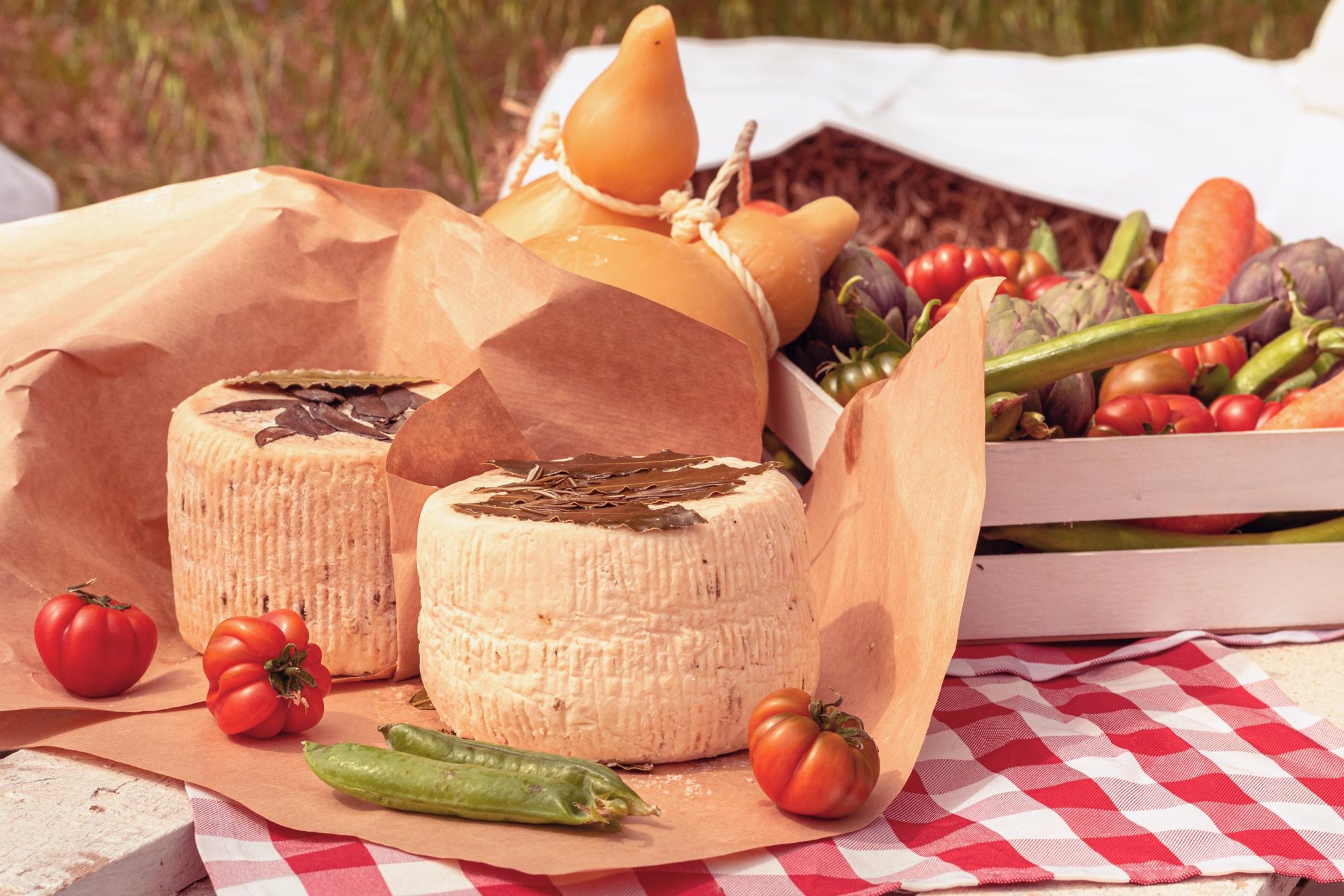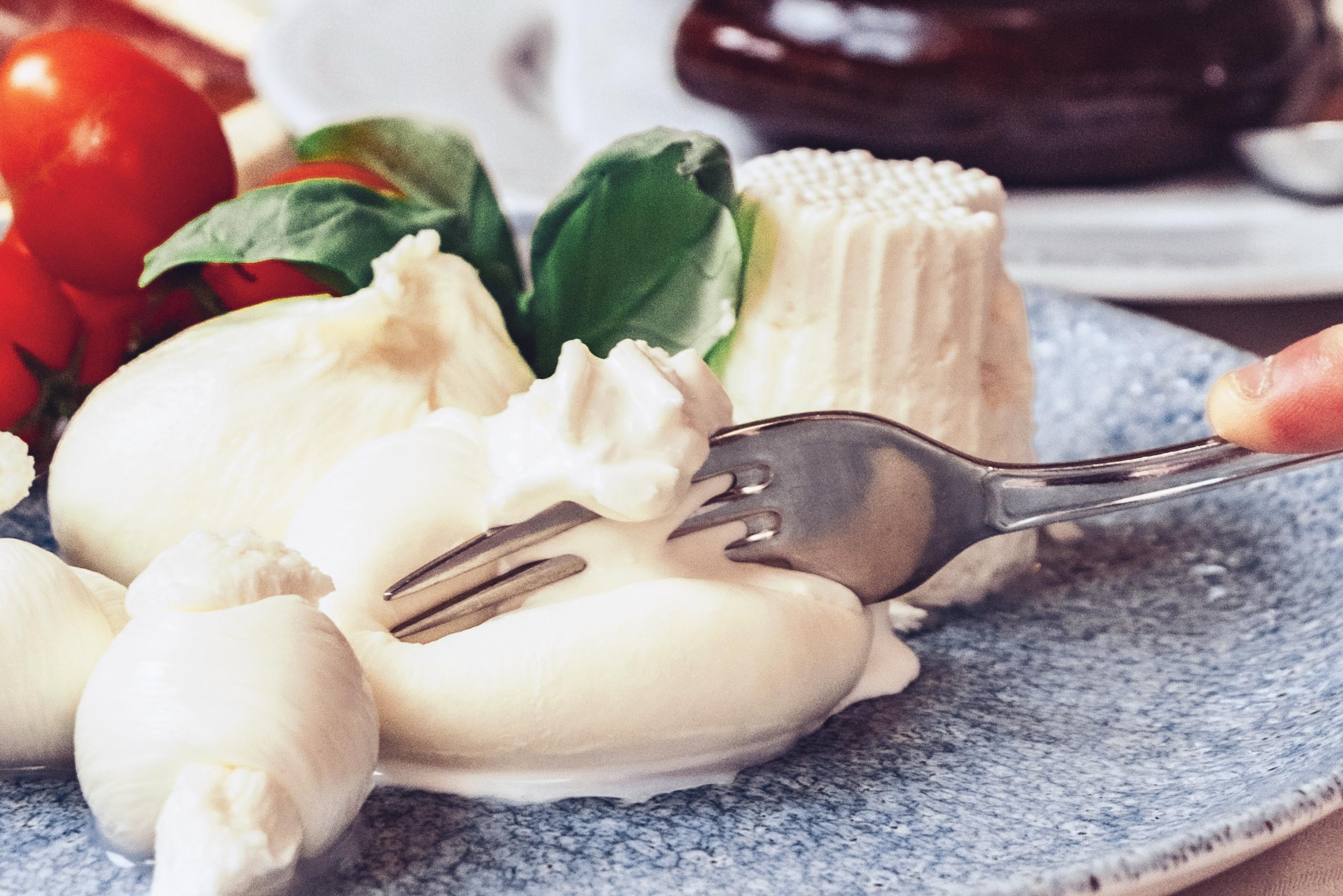Puglia burrata and other traditional cheese

Stretched between two seas, the Adriatic and the Ionian, Puglia abounds with history, art, nature and … cheese! Yes, you read that right!
The countryside here offers the perfect environment for cows and sheep to roam and graze freely, meaning that Puglia’s traditional cheeses are many and varied.
A meal-saver in Summer, the finishing touch on a delicious pasta or the perfect accompaniment to fruit, cheese is a staple of the Mediterranean cuisine. So much so that there are laws that protect it and classifications like we have for wine, DOP being the highest mark of quality for cheese.
All very good reasons to make the trip to Puglia! (Perhaps on one of our road trip holidays ?).
In the meantime, here’s a primer so you know what to order when you finally get here.
Burrata di Andria IGP
Fresh, double cream cheese, probably the most famous cheese from Puglia. The paste of mozzarella is worked to form small “bags” filled with strips of mozzarella and cream, the residue of the processing of mozzarella.
In the past, only milk from the Podolica cow was used, whereas today milk from Friesian cow is used. Burrata dates back to the beginning of the 20th century. The cheesemakers in Adria came about the recipe as a way to preserve mozzarella. There had been an exceptional snowfall in the winter of 1956 and transporting dairy proved to be particularly challenging – it kept freezing! A cheesemaker had the brilliant idea of creating a sort of protective flask made with mozzarella paste, to keep frayed mozzarella paste combined with cow’s cream safe from the cold. This is how the famous Burrata di Andria was born, the rest is history!
Canestrato Dop
Mild to mature hard cheese, made exclusively with raw milk from sheep, lamb rennet or veal.
The main production area is located between the province of Foggia and Bari, an excellent environment for sheep breeding. Of ancient origin, its name comes from the reed baskets that would contain the curd and gave shape to the cheese. Fragrant with flowers, fresh grass, and a hint of dried fruit. Slightly salty and spicy aroma, depending on the aging.
Caciocavallo Podolico Dauno
Stretched curd cheese, that’s shaped into a natural gourd or teardrop with a knot at the top so that it can be tied at the thin end with a cord to hang. It may be eaten fresh but it improves with a long aging process of up to five or six years.
The story goes that the Podolica breed of cattle was known since the fourth century BC because domesticated by the people of the Middle East. This breed is now well at home in the Gargano area, so much so as to heavily influence the production of caciocavallo.
Cacio P.A.T.
A fat, long-aged, hard cheese, it is produced only in winter when the flocks are free to graze in the countryside. It is not produced in Summer when the flocks go up to the mountains. During the aging process, the cheese is dipped in olive oil and a little vinegar too. It pairs well with red wine.
Pecorino
Aged up to 24 months, Pecorino cheese is made with sheep’s milk and has an intense flavor that pairs well with honey and jams. There are different varieties even within Puglia, all delicious.
Mozzarella di Gioia del Colle
The first image that comes to mind when thinking of mozzarella is Naples (mozzarella di bufala campana) and the surrounding area, but there are other regional variants too, like the one from Puglia. The main differences? The mozzarella from Puglia is made only with the milk of cows who spend at least 150 days a year grazing in this region. As a result, at least 60% of their diet is based on local herbs and hay. Cow’s milk is also different from buffalo’s milk, used for mozzarella di bufala, because of the different sequence of genes of the cows. Acidulous, with a pleasant fermented aftertaste, it’s got prevailing fragrant notes of milk/white yogurt with a hint of butter.
Ricotta forte pugliese
Forte means strong and this cheese definitely packs a punch. It’s made with fermented whey, which contributes to its unmistakable and slightly savory flavor. After the whey is boiled twice and cow’s milk is added, the ricotta is transferred into fiscelle, terracotta containers and left there for 3 days. This can be repeated as needed. When it’s ready, it’s stored up to 5 months for the aging process. It pairs well with pasta but it can also simply be eaten on bread.

